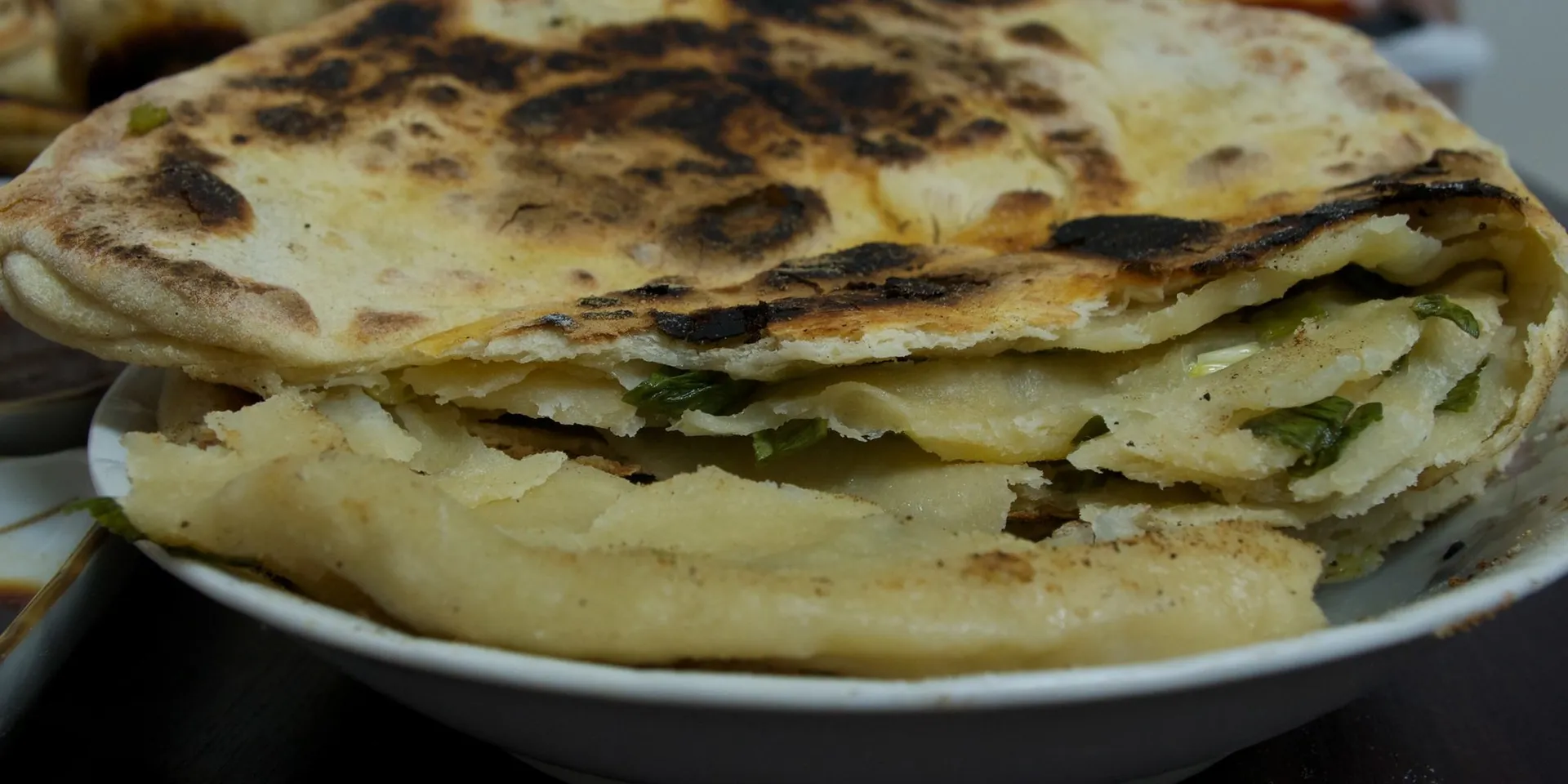Laobing bread, or Chinese flatbread, is a type of unleavened bread that is popular in northern China. It is made with flour, water and salt, and usually has a round or oblong shape. Laobing bread is often served with soups or stews, and can also be used for making wraps or sandwiches.
What is Laobing Bread?
Updated:

"純手工蔥烙餅" by Le Ciel Azuré is licensed under CC BY-SA 2.0. To view a copy of this license, visit https://creativecommons.org/licenses/by-sa/2.0/?ref=openverse.
Laobing Bread is a type of Chinese flatbread. It is made with wheat flour, water and salt, and is usually round in shape. Laobing bread is a popular street food in China and is often eaten as a snack or for breakfast.
How is Laobing Bread made?
Laobing bread is made by mixing wheat flour, water and salt together to form a dough. The dough is then flattened and shaped into a round flatbread. The bread is then cooked on a hot griddle or in a pan until it is golden brown and crispy.
Where does laobing bread come from?
Laobing bread is thought to have originated in the province of Shandong, in northeastern China. It is a popular street food in China and can be found in many cities across the country.
What does laobing bread taste like?
Laobing bread has a crispy outer crust and a soft, chewy inside. The bread is usually eaten plain, but it can also be topped with sesame seeds, chili pepper or other toppings.
How do you eat laobing bread?
Laobing bread can be eaten as a snack or for breakfast. It is often served with dipping sauces such as soy sauce or vinegar. Laobing bread can also be used as a wrap for fillings such as vegetables, meat or tofu.
Laobing bread is a popular street food in China that is often eaten as a snack or for breakfast. Laobing bread is made with wheat flour, water and salt, and is usually round in shape. The bread is cooked on a hot griddle or in a pan until it is golden brown and crispy. Laobing bread can be eaten plain, but it can also be topped with sesame seeds, chili pepper or other toppings.
Nutritional Information
Approx values based on a 100g portion.
Laobing Bread Recipe
Laobing bread can be eaten plain or with toppings such as sesame seeds, chili pepper or dipping sauces such as soy sauce or vinegar. This recipe will show you how to make your own laobing bread at home. Enjoy!
Ingredients:
1 cup wheat flour
1/2 cup water
1/4 teaspoon salt
Instructions:
1. In a large bowl, mix together the wheat flour, water and salt to form a dough.
2. Place the dough on a lightly floured surface and knead for 10 minutes.
3. Cover the dough with a damp cloth and let it rest for 30 minutes.
4. Preheat a griddle or pan over medium heat.
5. Cut the dough into 12-inch pieces and shape each piece into a round flatbread.
6. Cook the bread on the griddle or pan for 2-3 minutes per side until golden brown and crispy. Serve with soy sauce or vinegar for dipping.
7. Enjoy!
Laobing Bread FAQ's
Laobing bread is made by mixing flour, water and salt together to form a dough. The dough is then rolled out into a thin sheet and cooked on a griddle or in a frying pan over high heat.
Laobing bread is made with flour, water and salt.
Laobing bread is a good source of carbohydrates and can help to provide energy. It is low in fat and sodium, and does not contain any cholesterol. Laobing bread is also a good source of dietary fiber.
There are approximately 100 calories in one Laobing bread.
Laobing bread can last for up to two days if stored in a cool, dry place.
Yes, Laobing bread can be frozen.
Laobing bread has been made in China for centuries. It was traditionally made with wheat flour, and later with rice flour. Laobing bread was first introduced to the West in the early 20th century by Chinese immigrants.
Laobing bread is available at most Chinese grocery stores. It can also be ordered online from specialty food websites.
Laobing bread is usually cooked on a griddle or in a frying pan over high heat. It can also be baked in an oven at a high temperature.
Some popular recipes that use Laobing bread include Laobing buns, Laobing wraps and Laobing sandwiches.
When making Laobing bread, it is important to roll the dough out as thinly as possible. This will help to ensure that the bread cooks evenly and does not become too thick or doughy. Laobing bread can also be cooked in an oven at a high temperature.
Some variations of Laobing bread include adding herbs or spices to the dough, or using different types of flour. Laobing bread can also be made with fillings such as vegetables, meats or cheeses.
Yes, Laobing bread can be made without salt by substituting another ingredient such as sugar.
Yes, Laobing bread is vegan.
No, Laobing bread is not gluten-free.
Laobing bread should be stored in a cool, dry place. It can also be frozen for up to two months.
Laobing bread that has gone bad will usually have a sour or rancid smell. The bread may also be discolored or have mold growing on it.
Laobing bread can last for up to two months in the freezer.
